- completed
[Aniso Tubule]
Roles of cortical microtubules and microtubule-associated proteins in gravity-induced growth modification of plant stems
- Biology and Biotechnology
ISS Science for Everyone
SCIENCE OBJECTIVES FOR EVERYONE
Roles of cortical microtubules and microtubule-associated proteins in gravity-induced growth modification of plant stems (Aniso Tubule) is an investigation that seeks to understand the mechanisms that plants use in growing stems of the right thickness to support them against gravity. Microtubules, part of a plant cell's molecular skeleton, align themselves with the local gravity field and thus produce short, thick bodies in hypergravity. This research will germinate Arabidopsis hypocotyls (thale cress) in space and then use a fluorescence microscope in the Kibo module to analyze the directions taken by tubules in the stem just below the leaves of new seedlings.
Experiment Description
RESEARCH OVERVIEW
- Resistance to gravitational forces is a critical response for terrestrial plant survival in one-g conditions. Ground-based experiments using conditions of centrifugal hypergravity indicate that development of a short, thick body is a main mechanism that enables plants to grow against the gravitational force. It has also been shown that the regulation of cortical microtubule orientation by the action of microtubule associated protiens, such as MAP65, is involved in hypergravity induced growth. From the results of the hypergravity experiments, it is theorized that plants will develop a long and thin body by changing the orientation of cortical microtubules under microgravity conditions. To confirm this hypothesis, the growth modifications of Arabidopsis hypocotyls will be examined in space. Changes in the dynamics of cortical microtubules and microtubule-associated proteins by observing Arabidopsis hypocotyls expressing Green Fluorescence Protien (GFP)-fused tubulins and microtubule-associated proteins are analyzed with a fluorescence microscope in the Kibo module. The results obtained in this investigation will help contribute to understanding the roles of cortical microtubules and associated proteins in gravity-induced growth modification of plant stems.
- The goal of the investigation is to understand the mechanism of how plants resist the influence of gravity during growth.To understand the changes in dynamics of microtubules.
- The investigation seeks to enable a better understanding of the changes in the dynamics of microtubules in microgravity.
- The results obtained in the present space experiment will contribute to understanding the roles of cortical microtubules and microtubule-associated proteins in gravity-induced growth modification of plant stems.
DESCRIPTION
Resistance to the gravitational force is a critical response for terrestrial plants to survive under 1 g conditions. The ground-based experiments using conditions of centrifugal hypergravity have indicated that development of a short and thick body is a main mechanism that enables plants to grow against the gravitational force. We have also shown that regulation of cortical microtubule orientation by the action of microtubule-associated proteins such as MAP65 is involved in hypergravity-induced growth modification.
From these results of hypergravity experiments, it is expected that plants would develop a long and thin body by changing orientation of cortical microtubule under microgravity conditions in space. To confirm this hypothesis, we will examine growth modifications of Arabidopsis hypocotyls in space. We also analyze the changes in dynamics of cortical microtubules and microtubule-associated proteins by observing Arabidopsis hypocotyls expressing GFP-fused tubulins and microtubule-associated proteins with a fluorescence microscope in the Kibo.
The results obtained in the present space experiment will contribute to understanding the roles of cortical microtubules and microtubule-associated proteins in gravity-induced growth modification of plant stems.
Media Gallery
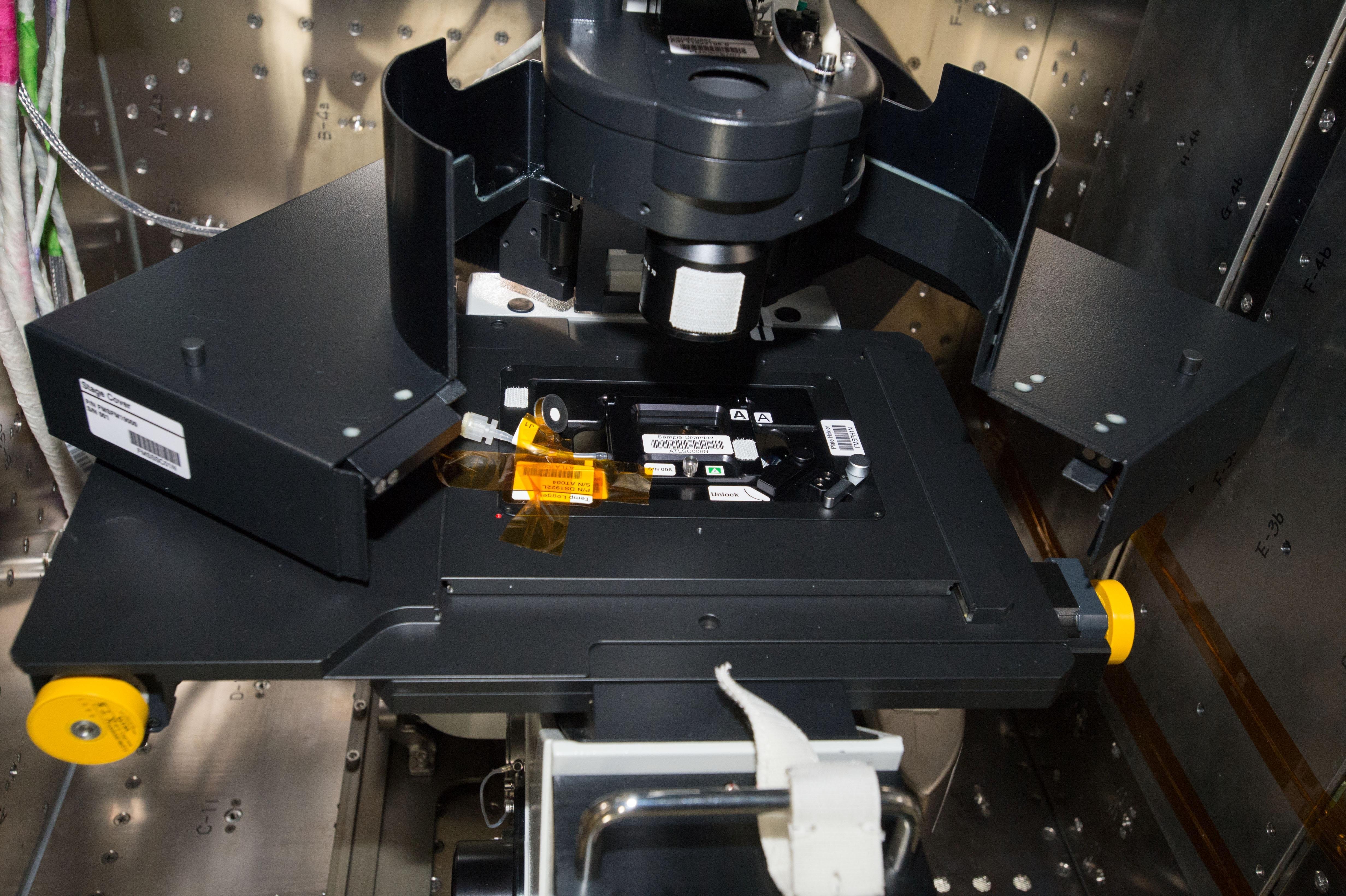
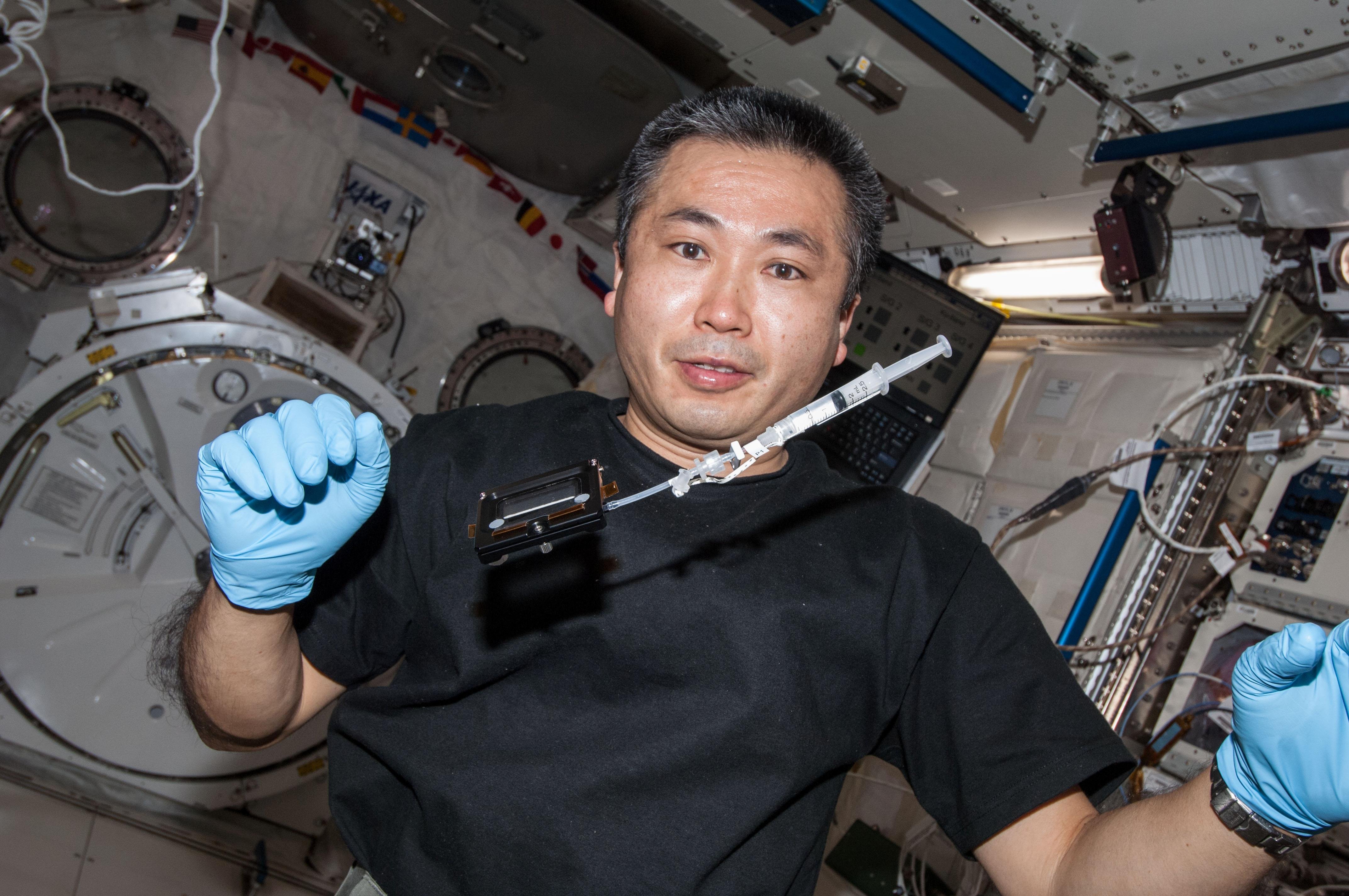
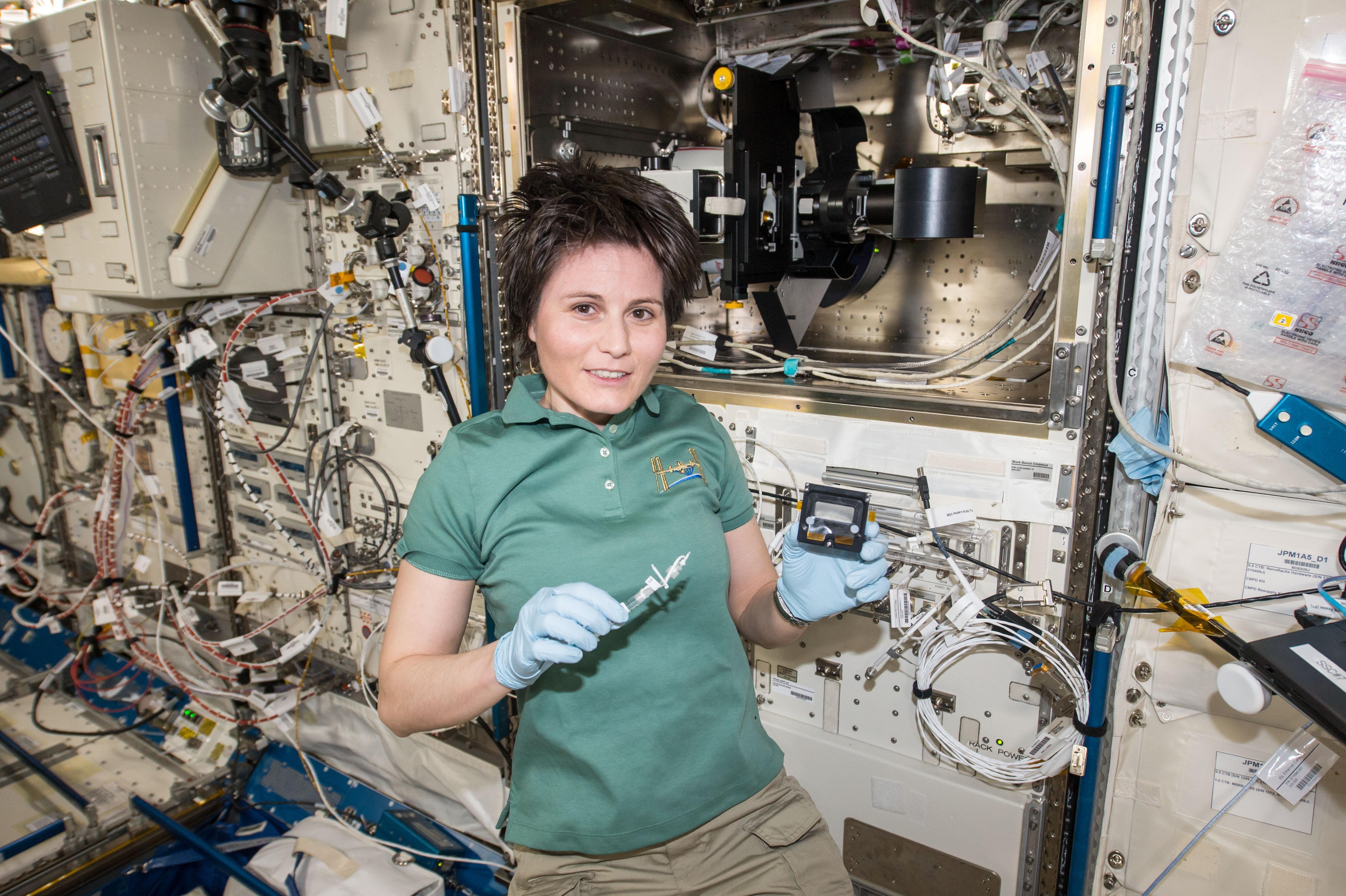

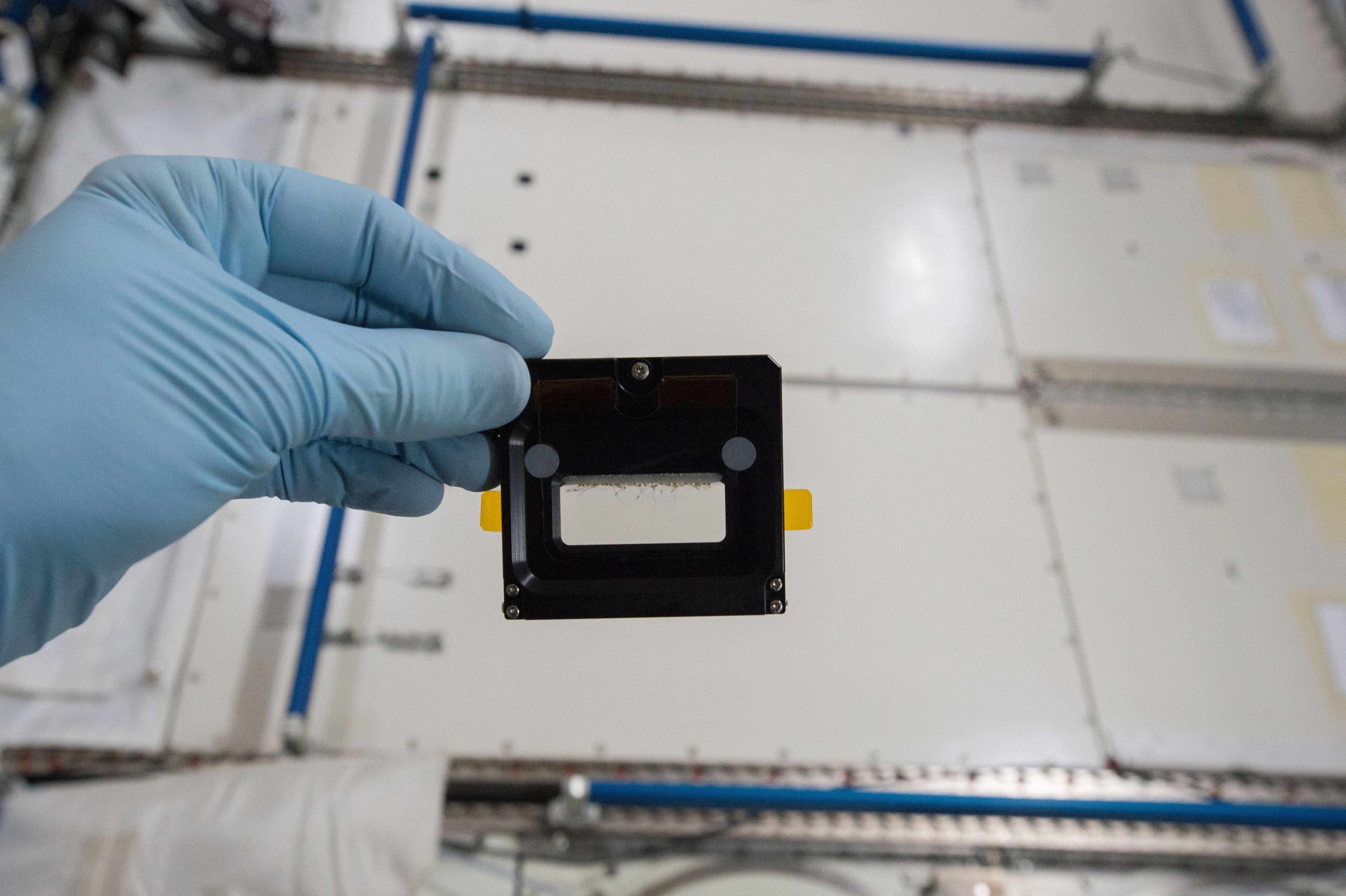
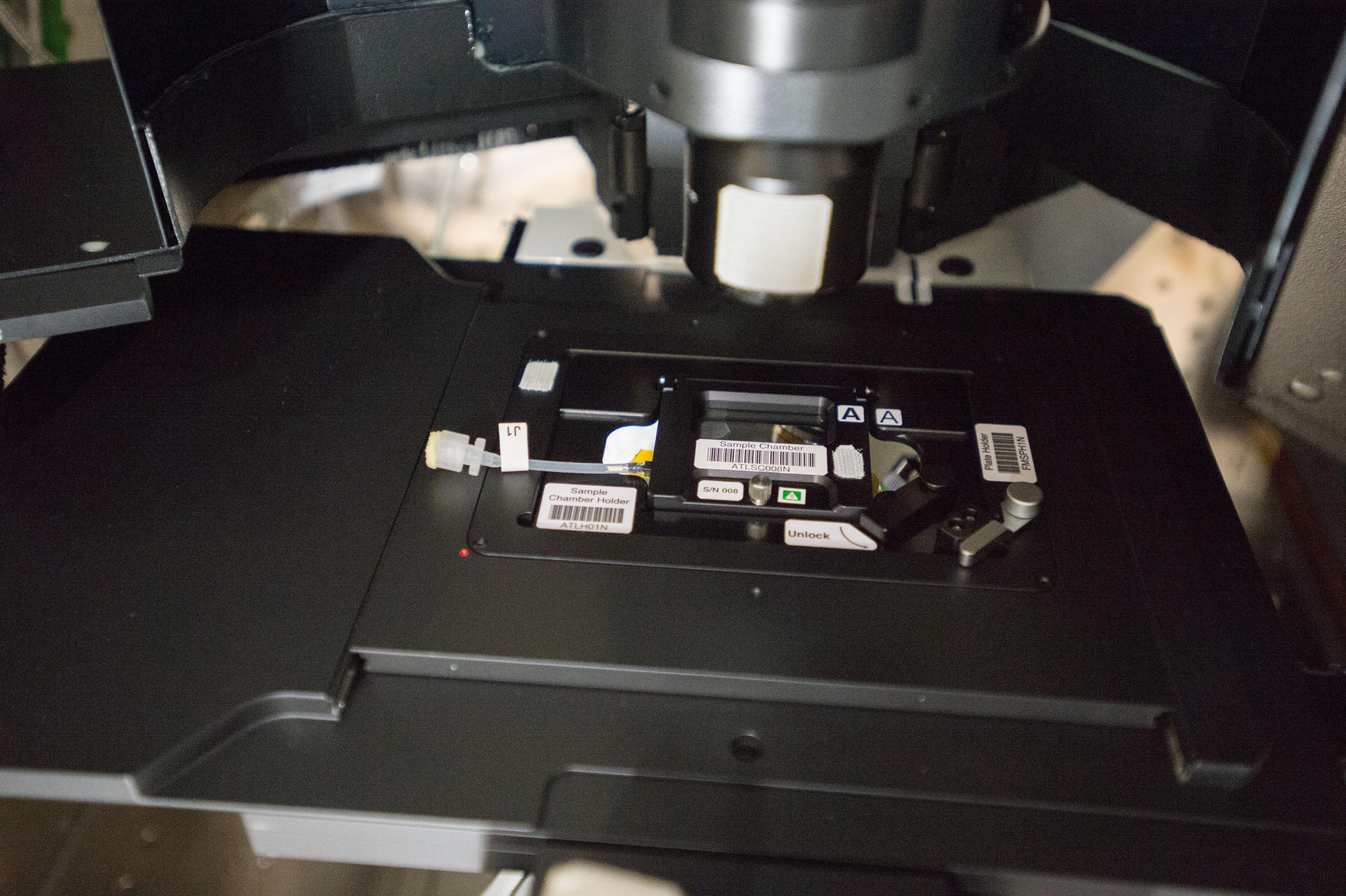
Applications
SPACE APPLICATIONS
Experiments in hypergravity on Earth indicate that plants grown in space should develop long, thin stems since microgravity will give the microtubules random directions, the anisotropy part of the experiment's name. The results will help scientists understand the roles of microtubules and their associated proteins in gravity-related modifications of plant growth.
EARTH APPLICATIONS
Improved understanding of the role of gravity in orienting microtubules and driving protein expression in plants as they grow on Earth will be indispensible in enhancing foods and other plants now grown on Earth. A significant portion of a plant's energy goes to building stalks that support it, energy that might be diverted to earlier, more beneficial crop production.
Operations
OPERATIONAL REQUIREMENTS AND PROTOCOLS
The crew member adds water to the plant seeds in Chamber (1) and incubates them in MELFI at +2°C for 96 hours. After 96 hours, the Chamber is moved to the Cell Biology Experiment Unit (CBEF). After three days in the CBEF, the Chamber is removed and placed on the JAXA fluorescence microscope in the JEM cabin for analysis. All observations are controlled from ground, and image data is downlinked to ground.
Watering; MELFI insertion; MELFI removal; CBEF insertin; CBEF removal; place Chamber on microscope stage; remove Chamber and discard.
Publications
PRINCIPAL INVESTIGATOR(S)
SOGA Kouichi [Osaka City University]
Unless specified otherwise, rights to all images belong to ©JAXA



